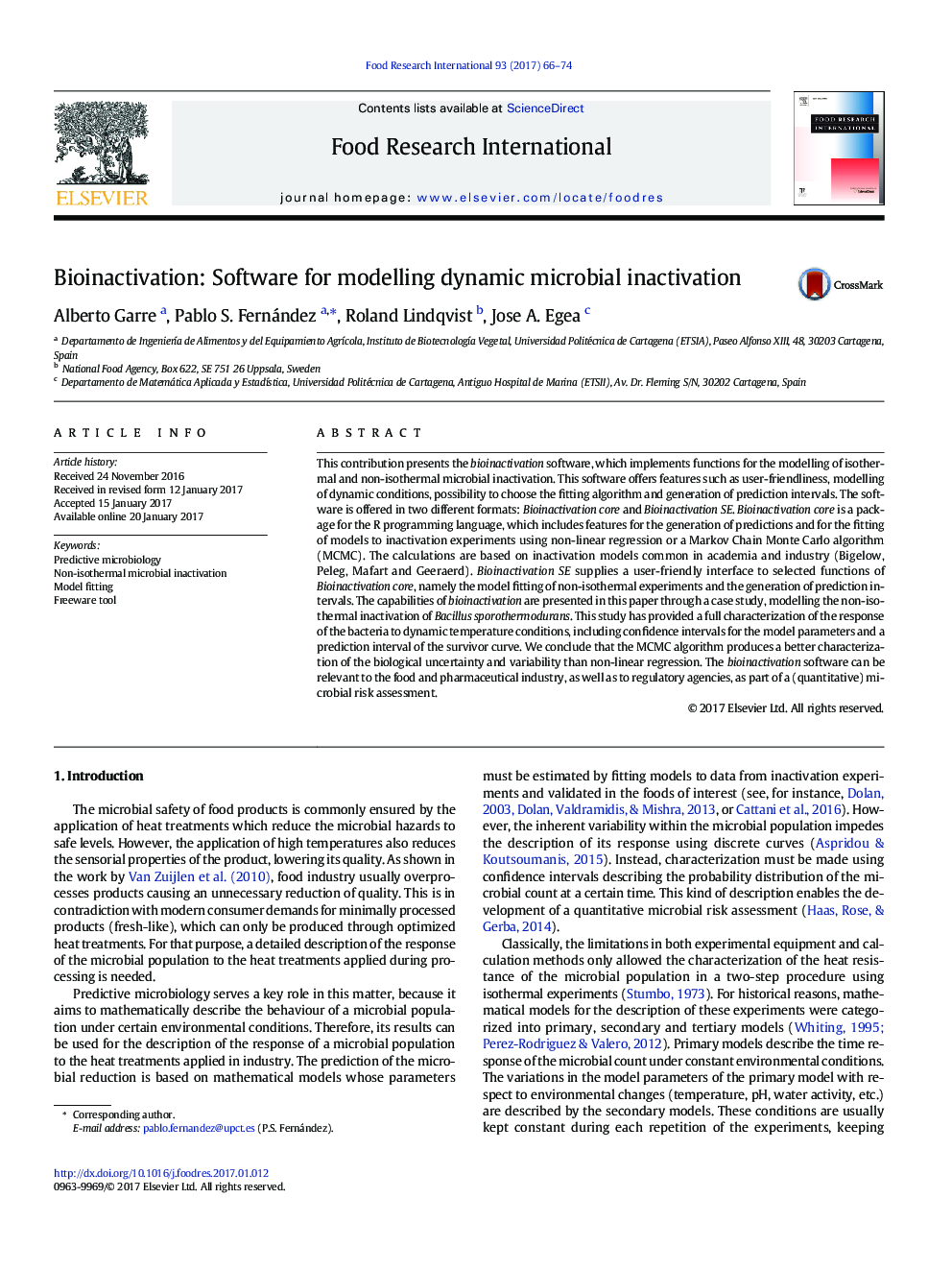| Article ID | Journal | Published Year | Pages | File Type |
|---|---|---|---|---|
| 5767938 | Food Research International | 2017 | 9 Pages |
â¢Bioinactivation is a freeware tool for modelling dynamic microbial inactivation.â¢Bioinactivation core is an R package which implements the mathematical functions.â¢Bioinactivation SE is a user-friendly interface to Bioinactivation core.â¢Being open source, it can be extended or incorporated in other analysis tools.
This contribution presents the bioinactivation software, which implements functions for the modelling of isothermal and non-isothermal microbial inactivation. This software offers features such as user-friendliness, modelling of dynamic conditions, possibility to choose the fitting algorithm and generation of prediction intervals. The software is offered in two different formats: Bioinactivation core and Bioinactivation SE. Bioinactivation core is a package for the R programming language, which includes features for the generation of predictions and for the fitting of models to inactivation experiments using non-linear regression or a Markov Chain Monte Carlo algorithm (MCMC). The calculations are based on inactivation models common in academia and industry (Bigelow, Peleg, Mafart and Geeraerd). Bioinactivation SE supplies a user-friendly interface to selected functions of Bioinactivation core, namely the model fitting of non-isothermal experiments and the generation of prediction intervals. The capabilities of bioinactivation are presented in this paper through a case study, modelling the non-isothermal inactivation of Bacillus sporothermodurans. This study has provided a full characterization of the response of the bacteria to dynamic temperature conditions, including confidence intervals for the model parameters and a prediction interval of the survivor curve. We conclude that the MCMC algorithm produces a better characterization of the biological uncertainty and variability than non-linear regression. The bioinactivation software can be relevant to the food and pharmaceutical industry, as well as to regulatory agencies, as part of a (quantitative) microbial risk assessment.
Graphical abstractDownload high-res image (134KB)Download full-size image
